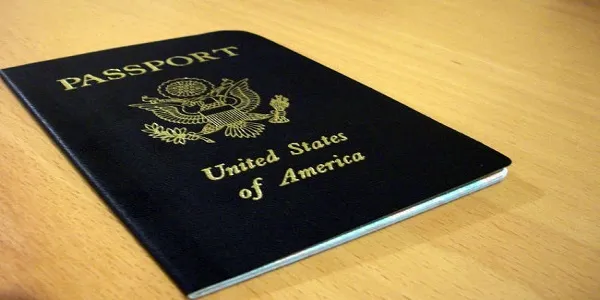Are you feeling overwhelmed by the maze of US visa requirements? You’re not alone! Navigating the complex world of visas can be a daunting task, but fear not – we’re here to help. In this blog post, we’ll break down everything you need to know about US visa requirements, from different types of visas to application processes and everything in between. So buckle up and get ready to simplify your journey through the intricate world of US immigration laws. Let’s dive in! US VISA Requirements
Introduction to US Visa Requirements:
Obtaining a visa to enter the United States can be a complex and overwhelming process. The US government has strict regulations in place for individuals who wish to visit, study, work, or live in the country. These requirements ensure the safety and security of both US citizens and foreign visitors.
There are multiple types of visas available depending on the purpose of your visit, such as tourist visas, student visas, work visas, and immigrant visas. Each type has its own set of specific requirements that must be met in order to be approved.
The first step in understanding the US visa requirements is determining which type of visa you need. This will depend on your reason for visiting the country, as well as your length of stay.
For short-term visits for tourism or business purposes (less than 90 days), a non-immigrant visa is required. These include B-1 (business) and B-2 (tourist) visas. On the other hand, if you plan to reside permanently or have an extended stay in the US, an immigrant visa would be necessary.
Regardless of which type of visa you require, there are some general requirements that all applicants must meet:
- Valid passport: Your passport must be valid for at least six months beyond your intended period staying in the US. EXTEND US VISA ONLINE
- Purpose of travel: You must have a legitimate reason for entering the country.
- Proof of ties to home country: You must provide evidence that ties you back to your home country and show that you intend to return after your stay.
- Financial means: You should demonstrate sufficient financial resources to cover expenses during your visit.
- Health insurance: Some types of visas require proof of health insurance coverage during your stay in the US.
In addition to these general requirements, each type of visa has its own specific criteria that must be met. For example, if applying for a student visa (F-1), you must provide proof of acceptance to a recognized US educational institution and show that you have adequate funds to cover tuition and living expenses.
It is crucial to carefully review the specific requirements for your desired visa type before submitting an application. Failure to meet any of these requirements can result in delays or even denial of your visa.
Understanding the US visa requirements is essential when planning a visit or stay in the country. By familiarizing yourself with the different types of visas, as well as their specific requirements, you can ensure a smoother and more successful application process.
Types of US Visas and their Eligibility Criteria
The United States offers a variety of visas for individuals who wish to visit, work, or study in the country. Each visa has its own specific eligibility criteria and application process. In this section, we will discuss the different types of US visas and their eligibility criteria.
- B-1/B-2 Tourist Visa:
This type of visa is designed for individuals who wish to visit the US for tourism or business purposes. The B-1 visa is for business travelers while the B-2 visa is for tourists. The eligibility criteria for these visas include having a valid reason for your trip, sufficient funds to cover expenses during your stay, and strong ties to your home country that will ensure your return.
- F-1 Student Visa:
The F-1 visa allows individuals to pursue academic studies at an accredited institution in the US. To be eligible, you must have been accepted into a full-time program at a recognized educational institution and show proof of financial support to cover tuition fees and living expenses.
- J-1 Exchange Visitor Visa:
This visa is intended for individuals participating in exchange programs, such as cultural exchanges or internships in the US. Eligibility requirements include being sponsored by an approved exchange program sponsor and having sufficient funds to cover expenses during your stay.
- H-1B Work Visa:
This popular work visa is designed for skilled workers coming to the US on a temporary basis (up to 6 years). To qualify, applicants must have a job offer from a US employer with specialized knowledge or expertise in their field.
- O-1 Extraordinary Ability Visa:
The O-1 visa is reserved for individuals with extraordinary ability in fields such as science, arts, athletics, education, or business. To be eligible, applicants must demonstrate national or international recognition and have received awards or other forms of recognition in their field.
- K-1 Fiancé/Fiancée Visa:
This visa allows foreign fiancés of US citizens to enter the country for the purpose of getting married. Eligibility criteria include being engaged to a US citizen, having met in person within the last two years, and intending to get married within 90 days of entry into the US.
In addition to these visas, there are also numerous other categories such as E visas for investors/traders, L visas for intra-company transfers, and U visas for victims of crimes. Each category has its own specific eligibility requirements that must be met before an individual can obtain their visa.
It is important to note that meeting the eligibility criteria does not guarantee approval of a visa. The final decision lies with the consular officer reviewing your application. Therefore, it is crucial to thoroughly understand the requirements and provide all necessary documentation to support your case.
Navigating through the complex world of US visa requirements can be overwhelming. It is essential to research and understand which type of visa you are eligible for before beginning the application process.
Step-by-Step Guide to Applying for a US Visa
Applying for a US visa can seem like a daunting and complex process, but with the right guidance and information, it can be a smooth and successful experience. In this step-by-step guide, we will walk you through the process of applying for a US visa, from determining which type of visa you need to submitting your application.
Step 1: Determine Your Visa Type
The first step in applying for a US visa is to determine which type of visa is appropriate for your purpose of travel. There are various types of visas such as tourist visas, student visas, work visas, and more. Each type has its own specific requirements and restrictions, so it’s important to carefully research and identify the one that best suits your needs.
Step 2: Complete the Online Nonimmigrant Visa Application (DS-160)
Once you have determined your visa type, you will need to fill out the DS-160 online application form. This form collects personal information about yourself including your name, address, employment history, travel plans, and more. It’s crucial to ensure all information is accurate and complete as any discrepancies could lead to delays or even denial of your application.
Step 3: Pay the Application Fee
After submitting your DS-160 form online, you will need to pay the non-refundable visa application fee. The fee amount varies depending on the type of visa you are applying for. You can pay this fee online using a credit card or at designated payment locations.
Step 4: Schedule an Interview Appointment
Once you have paid your application fee, you will then need to schedule an interview appointment at the nearest US embassy or consulate in your home country. It’s recommended to schedule this appointment well in advance as there may be long wait times due to high demand.
Step 5: Gather Required Documents
Before attending your interview appointment, it’s important to gather all required documents such as passport photos, proof of financial stability, and any supporting documents relevant to your visa type. It’s crucial to carefully review the specific requirements for your visa type to ensure you have all necessary documents.
Step 6: Attend the Interview
On the day of your interview, arrive on time and be prepared to answer questions about your purpose of travel, ties to your home country, and other relevant information. The consular officer will also review your application and supporting documents during this interview.
Step 7: Wait for a Decision
After the interview, you will either receive an approval or denial decision on the spot or be notified at a later date through email or mail. If approved, you will receive further instructions on how to retrieve your visa.


